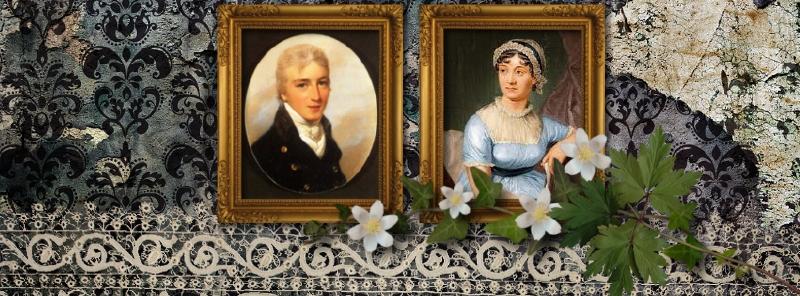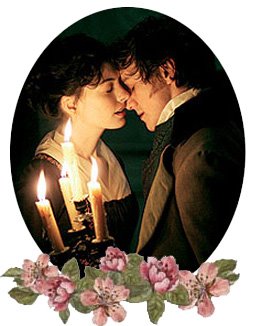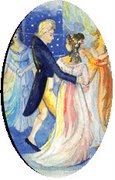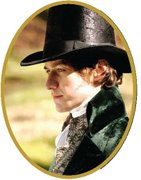The Mystery of Cadell/Austen Letter
 I’m going to
I’m going to
When was the Cadell/Austen letter obtained?
First, about the Cadell & Davies. Here’s what I learned from the Harvard site:
Thomas Cadell (1742-1802) entered the
 Now, Rachel and Linda have helped me with more research on Cadell letter. There is this book titled ‘The Publishing Firm of Cadell & Davies: Select Correspondence and Accounts, 1793-1836’ (Besterman 1938) that we believed would shed some lights into the research. Rachel obtained the book first, and then forwarded me some info she learned from the book. I will share with you what she found later.
Now, Rachel and Linda have helped me with more research on Cadell letter. There is this book titled ‘The Publishing Firm of Cadell & Davies: Select Correspondence and Accounts, 1793-1836’ (Besterman 1938) that we believed would shed some lights into the research. Rachel obtained the book first, and then forwarded me some info she learned from the book. I will share with you what she found later.
Back to what was written in the Carrigglas website:
‘…on learning of her [Jane’s] death Thomas traveled the considerable distance to England to pay his respects and at an auction of her effects bought a publisher's rejection letter - for Pride and Prejudice.’
To my knowledge (also Linda’s and Rachel’s), there was never an auction of Jane Austen’s letter, hence it is very likely, with all due respect, that Carrigglas overlooked Caroline’s letter (1 April 1869, Memoir of Jane Austen) that said: ‘At a sale of Cadell’s papers &c Tom Lefroy picked up the original letter – and Jemima copied it for me’.
Jane’s father sent his letter to Cadell on
The firm (Cadell & Davies) had many papers that illustrated relations (described as neither intimate nor cordial) between Cadell & Davies and another publisher, Archibald Constable. Their correspondence letters are salvaged due to preservation of Constable's letter books in the National Library of Scotland. Next there is a description of a series of folly's made by the publishers but then this leads on to: ‘A greater folly, because more extreme, was committed by the firm in their reply to the following letter.’
The letter from George Austen is written below and is referenced to J.E Austen Leigh's memoir of JA, 6th Ed, p 129. The next line (directly below the letter) is ‘Cadell and Davies summarily rejected Mr. Austen's modest proposal, refusing, presumably, even to see the manuscript.’
A great folly indeed, a folly move by Cadell & Davies! ^_^
Rachel also found in another section of the book information which suggested that Cadell & Davies were usually very speedy in their responses to authors who wrote to them. In one example there was the situation where an author sent a preliminary inquiry on 7 Oct and Cadell & Davies replied to this inquiry on 8 Oct – consequently the book was printed and published within 4 months. Provided that Cadell & Davies were running according to their usual routine, the rejection letter was likely written within days of receiving George Austen's inquiry.
I also asked Linda if it is possible for someone to purchase or obtain a letter owned by a publisher before the said company is closed down. This is in relation to my hypothesis that the original Tom Lefroy went to
Linda suggested that it is very unlikely for someone to do so. Make sense to me, hence I crossed out the first option that Tom Lefroy obtained the Cadell letter in 1817/18. Then, upon browsing the Besterman book, Rachel found a letter written by John Blackwood (a publishing ally to Cadell & Davies) to his brother, Alexander, on
Based on such information, I conclude that 1) the sale of Cadell & Davies papers was done in 1840; 2) it is very likely that the Cadell/Austen letter was obtained during that occasion in November 1840.
Who bought the letter? The old Tom, or the other Tom?
The conclusions above lead to another question: who attended the Cadell sale that later bought back Mr. Austen’s letter? Caroline Austen said it was Tom Lefroy, and she alluded that it was the Thomas Edward Preston Lefroy (for Jemima later gave the letter to Caroline).
Now, if the Cadell sale was done in 1840, then it's possible that TEPL was the one who bought it. He would be 25 by then (TEPL was born in August 1815), old enough for such a business. But why did he do that? What was the MOTIVE? Unless Anna Lefroy asked him to, or... the older Tom Lefroy himself asked him to.
In 1840, Thomas Langlois Lefroy was already an Irish dignitary. He was not the Baron of Exchequer yet that time, but I doubt that he would travel to
I can buy the argument of TEPL buying the Cadell/Austen letter IF I can find the motive; such as that he was commissioned by Anna Lefroy. Meaning, TEPL would have known Jemima Lefroy intimately by 1840, for it was unlikely that TEPL went to London on his own account to obtain the letter if he was not yet engaged with Jemima (who was Anna Austen Lefroy’s daughter) back then.
There is another way of looking at this matter. How many people WOULD KNOW that Cadell refused First Impression? Mr. Austen, who had died already. Jane Austen, also had died by 1840, but definitely had learned from her father of Cadell’s rejection as early as November 1797. Then, Cassandra and Mrs. Austen, and Henry. But I cannot see the links from Cassandra (she was a very private person), Mrs. Austen or Henry (or other Austen brothers) to TEPL. The only link I can see is from Jane Austen herself, telling Tom Lefroy about the letter. That would be in November/December 1797… possibly in
 The nth option is going back to Anna Austen Lefroy herself playing her cards. But she did not even say anything about Cadell in her reminiscence in Memoir of Jane Austen. Such an important thing, as a believer of love, Anna would have said something about the letter (remember, she wrote to Austen-Leigh’s wife in response to Caroline's warning of the Chief Justice). But no… it was Caroline Austen who first talked about the Cadell rejection and Mr. Austen’s original letter, the very same woman who warned James Edward Austen Leigh ‘against raking up that old story of the still living ‘Chief Justice’’. Had Caroline suspected that the Cadell/Austen letter might have Chief Justice’s fingerprints, she would not publicly acknowledge the letter. However, because she received the letter from a neutral-zone person (TEPL via Jemima), it was very safe for her to pass the letter to her brother Edward.
The nth option is going back to Anna Austen Lefroy herself playing her cards. But she did not even say anything about Cadell in her reminiscence in Memoir of Jane Austen. Such an important thing, as a believer of love, Anna would have said something about the letter (remember, she wrote to Austen-Leigh’s wife in response to Caroline's warning of the Chief Justice). But no… it was Caroline Austen who first talked about the Cadell rejection and Mr. Austen’s original letter, the very same woman who warned James Edward Austen Leigh ‘against raking up that old story of the still living ‘Chief Justice’’. Had Caroline suspected that the Cadell/Austen letter might have Chief Justice’s fingerprints, she would not publicly acknowledge the letter. However, because she received the letter from a neutral-zone person (TEPL via Jemima), it was very safe for her to pass the letter to her brother Edward.
Because Anna did not say anything of the Cadell/Austen letter, I can safely say that SHE DID NOT KNOW of the letter until Caroline presented it to JEAL. And there is only one explanation for me of how the letter fell into TEPL’s hand: Thomas Langlois Lefroy himself gave him the letter, or the old TL asked TEPL to obtain the letter in London, for, upon learning of Cadell’s sale from somewhere, the old Tom Lefroy realised the historical value of that letter (assuming again, in 1797 Jane still in very good speaking-term with Lefroy). In the hope of a luck to find Mr. Austen’s letter among Cadell’s many papers, Tom Lefroy contacted TEPL (of whose presence I know not at that time), asking his nephew to go to the Cadell sale and obtain the letter for him. TEPL could either keep the letter, or gave it to Tom Lefroy, who later gave it back to his nephew when he was much much older (I suspect, during the ‘boyish love’ conversations).
The Tom Lefroy commission scenario is the most likely scenario for me, for Tom Lefroy would be too busy to travel to England (especially for non-professional purpose as purchasing Cadell’s paper), and TEPL might used to travelling England-Ireland back and forth anyway. Making me realise that I need to learn more of Thomas Edward Preston Lefroy.
In any case, I don't see Anna's or Caroline’s fingerprints in Cadell/Austen’s letter. Instead, I see Tom Lefroy's; directly or indirectly.
Reference:
Austen-Leigh, J. E. 1871, A Memoir of Jane Austen and Other Family Recollections (2002 Oxford edition), Oxford World's Classics, Oxford.
Besterman, T. 1938, The Publishing Firm of Cadell & Davies: Select Correspondence and Accounts, 1793-1836, Oxford University Press, Oxford.
Cecil, D. 1978, A Portraif of Jane Austen, Constable, London.
PS 27 August 2007:
We now know that Thomas Edward Preston Lefroy was a resident of England; particularly York and London. He was also a barrister like his uncle Tom Lefroy, being called to the London Bar on June 7, 1844. TEPL later became the Judge of County Courts of England.
Pic 1: Thomas Cadell, 1824 by Thomas Stothard
Pic 2: Thomas Cadell the Elder from Oakknoll.com
Pic 3: Reverend George Austen, Jane's father, from paintingport.com
Pic 4: the old Thomas Langlois Lefroy before 1855













































8 comments:
For the amount of email conversations the three of us have had over this, you presented it so concisively. Thank you! I know it is speculative but if anyone has any opinions about this matter, do share......?
Hello Ladies!
Aah, one of my favorite topics - thank you so much for the amazing research into it.
I am quite struck by the latest and entrigued about TEPL's involvement.
Could it be possible that TEPL purchased the letter for Tom so that he could keep the purchase secret?
Forgive me for not remembring when Tom's wife died, but if he openly purchased that letter I would think people would find out. Would that be scandelous or disrespectful to his wife or family to do so? Would he have to explain himself and why the he would want the letter?
I also find it entriguing that TEPL was the one Tom told about his "boyish love" on top of him possibly being the one to make this all-important purchase of the letter.
Was TEPL Tom's confidant for his true feelings on Jane?
One could say that the her fame may have prompted the letter purchase but the motive is missing. Tom may have known about the rejection letter and therefore it meant something to him or could it also have been that Tom knew he was somehow connected to P&P as one of the characters after he read it?
: )
Thank you Rachel and Kari (and Linda!).
Could it be possible that TEPL purchased the letter for Tom so that he could keep the purchase secret?
Very likely. Mary died on 31st January 1858, January, I guess... about three weeks after Tom's birthday. He must be devastated too... for he also loved her.
Anyway, I think it's possible that Tom Lefroy was the one with the MOTIVE to buy the letter. He would commission TEPL to purchase the letter for him then.
I'm also interested in Tom - TEPL connection, Kari. I agree that it's very weird that it was TEPL to whom Tom confessed of the boyish love, and it was also TEPL who obtained the Cadell letter (which was basically a memorabilia of Jane Austen).
I have a feeling that TEPL knew more than we generally thought of. Tom might not feel comfy to talk of Jane with Anna Austen Lefroy (not sure if they ever met either), but he might be more open with TEPL.
One could say that the her fame may have prompted the letter purchase but the motive is missing.
Indeed, they may say so. But Tom was not somebody who liked to bluff. I mean, he had tons of opportunities to bluff about Jane Austen, particularly after the publication of Emma. But I have this sense that very little of Tom's circle that knew of his past story with Jane. If he wanted to bluff, he would do that openly.
Hmmm, I wish I could comment but I'll have to do my reading first. -continues to wait impatiently for the mail-
It's intriguing, and I love reading posts on the subject, and the discussion comments.
Did the Cadell Auction not list the lots/buyers?
That's the thing, Michelle. I don't know how to track down the records of buyers... it might not be in the book. Best we can do is perhaps to contact Besterman himself if he's still alive... but I doubt it somehow...
Anyway, thanks for the thought, that's another way to approach it.
Ah, fantastic! I don't know why but I assumed that link had already been investigated and only revealed "Tom Lefroy".
I don't know the procedures but I would assume that they would have been required to keep a record of the auctions. Hopefully this can be verified/tracked down!
Hi Ladies! My Besterman book has arrived, and it contains no list of buyers of Cadell's paper. Not surprising, for the list would be huge. Most of the Cadell papers in Besterman's book were obtained from the National Library of Scotland, the New York Public Library, and in the British Museum. I doubt though that the list of buyers would be there... Besterman would have mentioned it.
Blackwood, or whoever the seller, should keep the records of auction, including names of the sellers. It's a long way to go, but if anyone is interested, welcome on board!
Hi Icha
If you ever need someone to do hours of hard slog (gosh, that sounds elegant!) just send me an email. :) More than happy.
Post a Comment